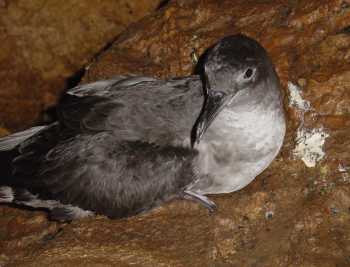The latest update of the IUCN Red List of Threatened SpeciesTM is now available (click here).
A look at members of the albatross and petrel order (Procellariiformes) reveals that of the 131 species listed, 81 (62%) have been given a category-of-threat status of Extinct, threatened (Critically Endangered, Endangered or Vulnerable) or Near Threatened by the World Conservation Union (IUCN), and only 50 are considered to be of Least Concern or Data Deficient.
Of the four families in the order, the Diomedeidae (albatrosses) are the most threatened, with all 22 species recognized being accorded a threatened or a Near Threatened status. This is followed by the Procellariidae (82 species of petrels, shearwaters and allies at 59% threatened/Near Threatened), Hydrobatidae (storm petrels, 23 species, 43% threatened/Near Threatened) and Pelecanoididae (diving petrels, four species, one Endangered).
Of the 19 ACAP-listed albatrosses and petrels only the two giant petrels Macronectes spp. have been categorized as Least Concern, so overall 93% of the ACAP species have been categorized as threatened or Near Threatened.
Consideration has been given to the inclusion of selected species of shearwaters Calonectris and Puffinus within the Agreement. For example, it is expected that next year the Critically Endangered Balearic Shearwater P. mauritanicus will be listed (click here). Of the 22 species of shearwaters in these two genera exactly half are considered to be threatened or Near Threatened and thus might be considered as candidate species for listing.

Balearic Shearwater
Photograph by Daniel Oro
Five species of tunas have been placed in threatened or Near Threatened categories by IUCN. They are Southern Bluefin Thunnus maccoyii, Critically Endangered; Atlantic Bluefin T. thynnus, Endangered; Bigeye T. obesus, Vulnerable; Yellowfin T. albacares, Near Threatened; and Albacore T. alalunga, Near Threatened. Longline fisheries for all five species are known to result in the incidental mortality of ACAP-listed albatrosses and petrels.
BirdLife International through its Global Species Programme is the IUCN Red List authority for birds, classifying species in terms of their risk of extinction.
John Cooper, ACAP Information Officer, 15 November 2011

 English
English  Français
Français  Español
Español